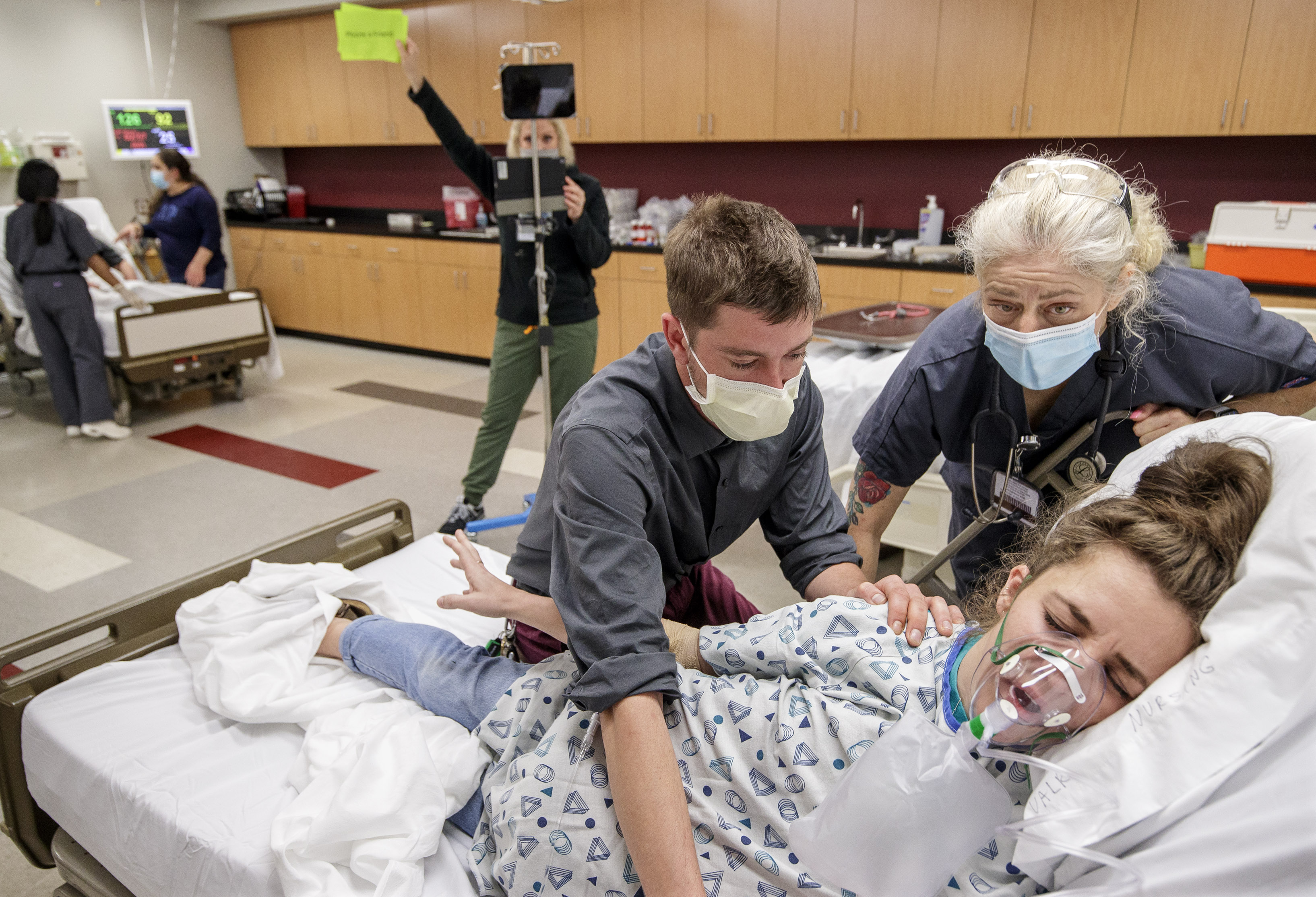Center for Simulation Innovation provides UA Little Rock nursing students with valuable educational experiences

The UA Little Rock Center for Simulation Innovation (CSI) provides nursing students with valuable experience that prepares them for their future careers in the healthcare industry.
Located on the first floor of the UA Little Rock Pat Walker Center for Nursing Education, CSI is a 20-bed state-of-the-art simulation hospital offering simulation-based clinical learning experiences within a 9,500 square foot facility.
Even in COVID times, CSI stays busy, typically running simulations five days a week, eight hours a day. Nursing students comprise the largest department at UA Little Rock.
“CSI is one of the most innovative simulation facilities in the South and provides simulation-based experiences to students and professionals,” said Josy Nduku, RN-BSN program coordinator. “The experiences are not just for nursing students or professional nurses.”
Nursing students are not the only ones who find the CSI invaluable.
“We have a lot of high school tours that come through our simulation center, and we let them go through the simulation-based escape rooms,” said Joanna Rostad-Hall, CSI interim director. “It’s a really innovative and unique recruitment opportunity.”
The School of Nursing has also collaborated with MidSOUTH, the School of Social Work, and the Interpreter Education Program. Additionally, future collaborations with the Department of Theatre Arts look promising to allow theater students to practice their acting skills by playing the role of patients during simulations.
“We also had a legitimate movie that was recently shot here that will soon be on TV. That was a huge deal,” Rostad-Hall said. “This is the direction that we are going. We are trying to open our simulation center doors to approach education and collaboration in a more innovative way.”
The School of Nursing isn’t allowed to say much about the movie, but they plan to hold a watch party when it is released.
Last summer, CSI completely overhauled its audiovisual system.
“We are fortunate to be a part of a university that wholly sees the value of simulation in education. We now have a completely new AV set up with state of the art functionality that allows students to watch video playback of their simulation experiences,” Rostad-Hall said. “This has significantly enhanced our simulation debriefs.”
If the School of Nursing receives a grant they’ve applied for, future plans for CSI include converting second floor space into flex classrooms “to allow us to bring simulation into the classroom.”

“Instead of sitting in class and watching someone lecture for three hours, we may ask students to complete a simulation while the other students watch and debrief the simulation. It will really bring simulation in the classroom, encourage more critical thinking, and make learning more fun,” Rostad-Hall said. “The next generation NCLEX licensure exam is slated to come out next year. It will be focused more on application rather than textbook knowledge. We want to include more dynamic, immersive student experiences rather than static theory lectures.”
CSI simulations include scenarios focused on a variety of concepts including communication, education, and patient health and safety. The simulations include caring for post-operative patients, treating critically ill patients, and the ever-popular birthing simulation.
“We have a birthing simulator that gives birth routinely to a manikin baby several times a week,” Rostad-Hall said. “She’s a tired mama.”
Among the simulation center’s five-year strategic plan is to purchase an even more advanced birthing manikin named Lucina with augmented reality features.
“She’s the most state of the art birthing manikin available. Participants can wear augmented reality goggles, and you can see inside the stomach as the baby is being birthed,” Rostad-Hall said. “This manikin addition will aid in our pursuits to keep our exceptional School of Nursing as competitive as possible.”
At the end of the spring semester, CSI provided a valuable learning opportunity for graduating nurses preparing to take the NCLEX exam this summer.
“We ran a multi-patient simulation-based learning experience for our students who are about to graduate,” Rostad-Hall said. “We developed a riff on ‘Grey’s Anatomy,’ aptly called ‘Trojan’s Anatomy,’ It was essentially a three hour-long episode of the show where students had to care for and prioritize numerous patients coming into the Trojan Memorial Hospital. The students on campus got the opportunity to play the role of nurses and patients while other nursing students were able to watch and engage via Zoom. We are always trying to push the envelope here in CSI and believe learning opportunities like this very much align with our simulation center vision.”
